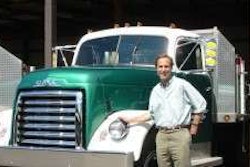Autonomous driving is probably the next most significant vehicular innovation on the horizon. Whether that horizon is a year or 10 years away is anyone’s guess, but the Institute of Electrical and Electronics Engineers forecast that by 2040, autonomous vehicles will account for 75 percent of all vehicles on the road.
Twenty five years is a long ways off, but General Motors Canada is going to do their part to push the technology forward.
The company’s Canadian Engineering Centre in Oshawa, Ontario will build a fleet of autonomous 2017 Chevrolet Volt electric vehicles that will first be deployed as part of a test program at GM’s Technical Centre in Warren, Michigan.
As part of the program, GM employees will reserve a car using a car-sharing app, then select a destination. GM’s autonomous technology will guide the vehicle to its destination and park it.
Google has a similar fleet program that the company says, to-date, has logged more than 1.2 million miles, “the equivalent of 75 years of typical U.S. adult driving.” Google adds the fleet has encountered 200,000 stop signs, 600,000 traffic lights and 180 million other vehicles on the road but has only been involved in 14 accidents. In 13 of those instances, the Google car was struck by another car. In the other, a Google employee had assume control of the car and caused the accident. The car, when under its own control, is at-fault accident-free, Google says.
The Google program and those similar, like GM’s, will drive this technology more mainstream in the next 25 years.
GM Canada president and managing director, Steve Carlisle, says the program will serve as a development lab to provide data that can accelerate GM’s technical capabilities in autonomous vehicles.
At the turn of the new year, Ontario will be the first province to test automated vehicles on-road.
Currently, only a small handful of states have passed laws permitting the testing of autonomous vehicles.
In the U.S., we’re clearly at our chicken-of-the-egg crossroads. Without the ability to widely test this technology, we can’t accelerate its development. Outside of major cities like San Francisco, Las Vegas and Miami, engineers can’t test the effectiveness of the technology.
Autonomous driving will revolutionize pickup and delivery in an urban setting, but not until it can be widely tested and verified in the application under real world conditions.


![[ click to enlarge + ]](https://img.hardworkingtrucks.com/files/base/randallreilly/all/image/2015/11/hwt.drive-by-etiquette.png?auto=format%2Ccompress&fit=crop&h=167&q=70&w=250)






